According to Seoul N. Korea has launched 3 missiles during the G20 in China.
N. Korea launches 3 missiles...
N. Korea launches 3 missiles...
Last edited:
Follow along with the video below to see how to install our site as a web app on your home screen.

Note: This feature currently requires accessing the site using the built-in Safari browser.
He had a romantic fallout with Kim..I think it's time send Dennis Rodman back over there for some more diplomacy.

The missiles were launched from the Hwangju region, South Korea's Joint Chiefs of Staff (JCS) said on Monday, according to the Yonhap news agency. There was no information on the types of missile fired or how far they flew. North Korea is barred from testing nuclear or ballistic missile technology, but recent months have seen it carry out a string of missile tests. It last fired a ballistic missile just two weeks ago from a submarine off its eastern coast, as South Korea and the US began annual military drills which routinely anger the North. On that occasion the KN-11 rocket that was fired flew for about 500km (300 miles) before falling into the Sea of Japan.
This latest test takes place as world leaders meet at the annual G20 economic summit, being hosted for the first time in China. The August rocket launch was considered its most successful test of a submarine-launched ballistic missile. A test of mid-range missiles in June was also considered successful. Tensions have soared since the North carried out its fourth nuclear test in January. In July the US and South Korea said they would deploy an anti-missile system to counter the North's threats, but this has been met with anger from Pyongyang and opposition from China.
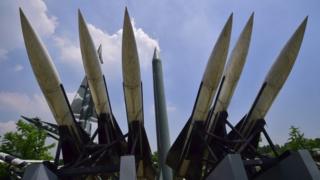
Replicas of North Korean Scud-B missile (C) and South Korean Hawk surface-to-air missiles are displayed at the Korean War Memorial in Seoul
What is the Terminal High Altitude Area Defense System (THAAD)?
* Shoots down short- and medium-range ballistic missiles in the terminal phase of their flight
* Uses hit-to-kill technology - where kinetic energy destroys the incoming warhead
* Has a range of 200km and can reach an altitude of 150km
* US has previously deployed it in Guam and Hawaii as a measure against potential attacks from North Korea
1. The enemy launches a missile
2. The Thaad radar system detects the launch, which is relayed to command and control
3. Thaad command and control instructs the launch of an interceptor missile
4. The interceptor missile is fired at the enemy projectile
5. The enemy projectile is destroyed in the terminal phase of flight
The launcher trucks can hold up to eight interceptor missiles.
North Korea 'fires three ballistic missiles into sea' - BBC News
North Korea already has a variety of land-based missiles that can hit South Korea and Japan, including U.S. military bases in those countries. But its development of reliable submarine-launched missiles would add weapons that are harder to detect before liftoff. South Korea's military condemned the launch as an "armed protest" by North Korea against the start of annual South Korean-U.S. military drills, but acknowledged it was an improvement over previous tests of similar missiles. "North Korea's nuclear and missile threats are not imaginary threats any longer, but they're now becoming real threats," South Korean President Park Geun-hye said of the launch. "Those threats are coming closer each moment." The missile, fired from a submarine off the eastern North Korean coastal town of Sinpo, reached into Japan's air defense identification zone, according to Seoul and Tokyo officials. The U.S. Strategic Command said it tracked the launch of the presumed KN-11 missile into the Sea of Japan. Its 500-kilometer (310-mile) flight puts all of South Korea within its range if it is fired near the two countries' border.
Missiles of such capability could also potentially strike parts of Japan, including U.S. military bases on the island of Okinawa, considering the operational range of North Korea's Sinpo-class submarines, which can move about 1,000 kilometers (620 miles) underwater at a time, said analyst Kim Dong-yub at Seoul's Institute for Far Eastern Studies. North Korea fired two missiles from submarines earlier this year, but South Korean defense officials believe they exploded in midair after flying less than 30 kilometers (18 miles). The launch was the latest in a series of missile, rocket and other weapon tests this year by North Korea, which is pushing to acquire reliable weapons that are capable of striking targets as far away as the continental United States. In June, North Korea, after a string of failures, sent a midrange ballistic missile more than 1,400 kilometers (870 miles) high. Analysts say the flight showed North Korea has made progress in its push to be able to strike U.S. forces throughout the region.
Many outside experts say North Korea doesn't yet have a functioning long-range nuclear missile capable of reaching the continental U.S., but they acknowledge that the North has been making steady progress in its weapons programs and could one day develop such a weapon. Some civilian experts have said they believe the North already has the technology to put warheads on shorter-range missiles that could strike South Korea and Japan. Japanese Prime Minister Shinzo Abe called the launch an "impermissible and outrageous act" that poses a grave threat to Japan. The U.S. Strategic Command statement said the launch did not pose a threat to North America, but the U.S. military "remains vigilant in the face of North Korean provocations." The U.S. said it and Japan have requested an emergency meeting of the U.N. Security Council to discuss the missile launch.
MORE
North Korea has launched 31 missiles in the four years since Kim succeeded his late father, Kim Jong Il, compared to the nine missile launches in 17 years of the elder Kim's rule, said Army Gen. Robert B. Brown, commander of U.S. Army Pacific. "That tells you a lot about North Korea's intentions," Brown told Pentagon reporters by phone from his headquarters at Fort Shafter in Hawaii. "I am very worried, as you look at the trend. " The message for the Army was that "we'd better be prepared should North Korea do something stupid," Brown said. U.S. Strategic Command reported earlier Wednesday that the launch of a suspected KN-11 missile from a submarine was detected off Sinpo on North Korea's east coast.
The missile flew over the Sea of Japan toward Japan and fell into the sea about 300 miles off the coast of North Korea. The North American Aerospace Defense Command determined that the missile launch did not threaten the United States, StratCom said. The submarine launch appeared to mark a major advance in North Korea's technology and methods for potential attack, and also brought about a rare moment of agreement among Japan, South Korea and China. The foreign ministers of all three countries, which have been at odds over China's territorial claims in the South China Sea, condemned the North Korean missile launch. The missile launch came amid an escalating series of threats from Pyongyang against annual military exercises near the Demilitarized Zone by South Korea and the U.S. The Korean Central News Agency, the official North Korean outlet, has carried official statements calling the exercises a prelude to invasion and warning of a pre-emptive nuclear strike. North Korean troops also have reportedly been planting land mines in the DMZ.

A man walks by a TV screen showing the North Korean leader Kim Jong Un at the Seoul Train Station in Seoul, South Korea
Brown said USARPAC was better configured to respond to a crisis on the Korean Peninsula since the "Pacific Pathways" program to boost the Army's role in the region was inaugurated in 2014 as part of the rebalance of forces to the Pacific. Under Pacific Pathways, more Army troops have been forward deployed to respond to threats and humanitarian crises and the command now consists of about 100,000 troops, compared to 70,000 when Pacific Pathways began, Brown said.
MORE
lol.
Did any of them get off the ground?
The three countries began an exchange of vital data on Thursday through video conferencing, South Korean news service Money Today reported. North Korea fired three midrange ballistic missiles on Monday that landed in Japanese territorial waters. Tokyo repeatedly failed to destroy the incoming projectiles. On Thursday, Christopher Johnstone, the Pentagon policy expert for Northeast Asia; Park Cheol-gyun, deputy head of the international policy bureau at South Korea's defense ministry; and Koji Kano, principal director of the defense policy bureau at Tokyo's defense ministry presided over the talks.

The three sides condemned North Korea's violations of U.N. Security Council sanctions resolutions and emphasized the need for council members to respond more effectively. North Korea has touted the recent launches. The Workers' Party newspaper Rodong Sinmun reported Tuesday that Kim Jong Un had provided on-site guidance to the military at the time of the launch. The trilateral video meeting on Thursday is a prelude to greater cooperation expected to take place between Seoul and Tokyo as Pyongyang steps up provocations.
On Thursday, Seoul's foreign ministry stated the reinstatement of any kind of military intelligence sharing between the two countries is to take place on the condition Seoul secures the "sufficient understanding and cooperation" of the Korean public. In 2012, an agreement to share intelligence with Tokyo was canceled at the last minute due to South Korean domestic wariness of cooperating with Japan on intelligence. But experts in South Korea are now mostly in agreement the Japan-Korea GSOMIA is necessary in the wake of recent threats, according to Yonhap.
U.S., Japan, South Korea to share intelligence on North Korea missiles
The test of the unarmed Minuteman III ICBM at Vandenberg Air Force Base, Calif., comes at a time when President Obama has called for extended deterrence measures and reaffirmed U.S. commitment to the defense of regional Asian allies. The missile's re-entry vehicle contained a telemetry package for operational testing and traveled about 4,200 miles to the Kwajalein Atoll in the Marshall Islands, according to the U.S. Air Force.
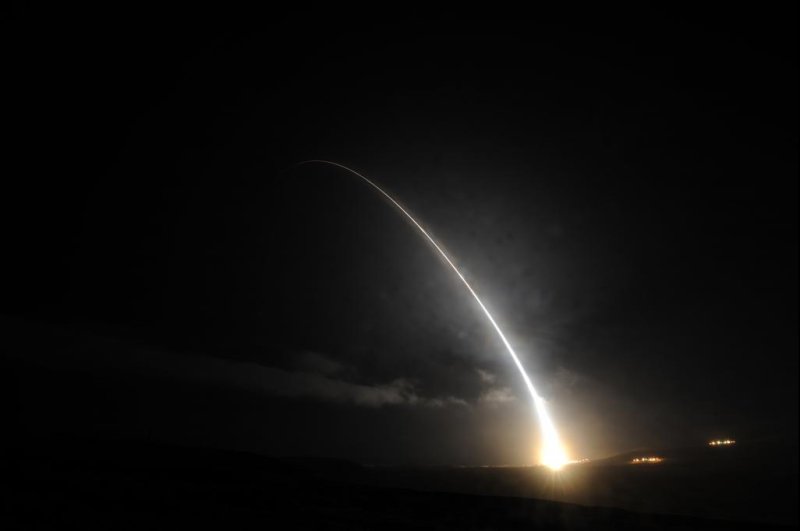
Col. Craig Ramsey, the 576th Flight Test Squadron commander, said the launch followed an "enormous reconfiguration of range assets that took six months to complete." The launch was the first of its kind since late February, NBC affiliate KSBY-TV reported. There were five launches in January and February before scheduled downtime, which was for the purpose of relocating launch equipment, according to the television network.
The Minuteman launch also came a few hours after the firing of North Korea missiles – a possible indication the U.S. test was conducted as a warning to Pyongyang's continued provocations, according to Yonhap news agency. The United States has consistently warned of more defense measures against Pyongyang if the country continued to pursue weapons tests. "North Korea needs to know that provocations will only invite more pressure and further deepen its isolation," U.S. President Barack Obama said Tuesday.
U.S. Air Force test-fires intercontinental ballistic missile across Pacific
During a security forum in Seoul on Thursday, Ahmet Uzumcu said North Korea is one of four states that is not a signatory to the anti-proliferation Chemical Weapons Convention, Yonhap reported. That doesn't mean, however, North Korea should be kept in isolation. The European Union and the United Nations have each requested talks with Pyongyang regarding the issue of chemical weapons, but they were all turned down, Uzumcu said, adding the OPCW has yet to successfully make contact with North Korean authorities.
It is difficult to assess the state of North Korea's chemical weapons because Pyongyang is not an OPCW member state, Uzumcu said. But the materials North Korea has disclosed indicate Pyongyang has been operating a highly developed chemical weapons program. South Korea's military has previously estimated North Korea retains about 2,500 tons of chemical weapons.
Uzumcu said his top priority on North Korea is to continue to encourage Pyongyang to speak to his organization and to eventually sign the convention. If North Korea joins the chemical weapons convention, a weapons destruction program could be drafted and put into action, after the OPCW council approves the measures, Uzumcu said. The OPCW was established in 1997 and won the 2013 Nobel Peace Prize for investigations into the use of the nerve gas sarin in the Syrian civil war.
North Korea suspected of developing sophisticated chemical weapons
A South Korean government source told Yonhap on Friday that North Korea's launch of three Rodong missiles on Sept. 5 all showed the same results. The missiles traveled for 620 miles, landed in Japan's air defense identification zone, and all dropped within a radius that extended less than a mile, the source said. The circular error probability, the measure of a weapon system's precision, has decreased from previous estimates that ranged 2-2.5 miles.
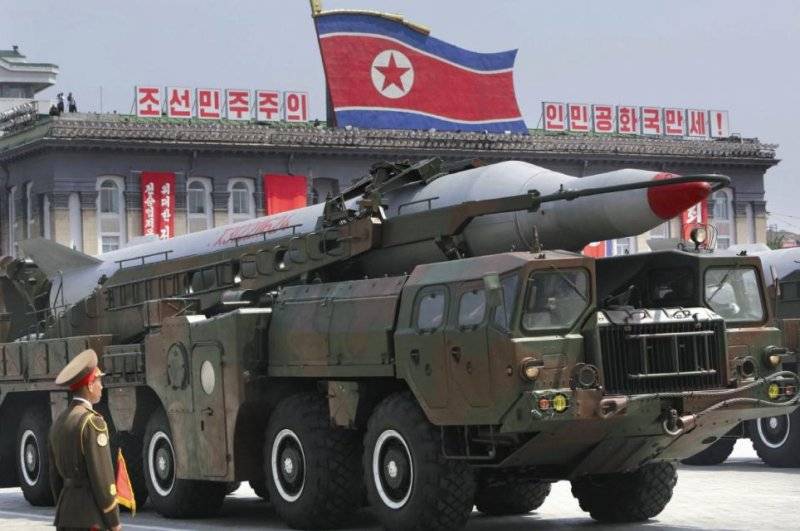
With the kind of improved accuracy that was demonstrated by the recent launches, the Rodong missiles, when equipped with a miniaturized nuclear warhead, a chemical or biological weapon could cause "unimaginable" destruction, the source said. There is also some speculation in Seoul the three North Korean missiles launched in early September were fired using a continuous shooting mode. North Korea could deliver dozens if not hundreds of projectiles if it has mastered the technology, according to the report.
North Korea may have also used this method of continuous shooting when it fired shells across the Northern Limit Line in 2010. North Korea's missile and nuclear tests have jolted the region and have been widely condemned. Japan press previously reported Pyongyang launched the missiles to test out the missile defense systems of Japan, the United States and South Korea, and that North Korea launched multiple projectiles to make interception more difficult.
North Korea's Rodong missiles have increased in strike accuracy, report says
Top diplomats of South Korea and Japan are to meet in New York on Sunday to discuss a coordinated response to North Korea's nuclear provocations. The talks are being held at a time when both countries are revisiting a canceled intelligence-sharing agreement known as the Japan-Korea GSOMIA, South Korean newspaper Herald Business reported.
Seoul's foreign ministry said Friday that Foreign Minister Yun Byung-se is to hold the dialogue with his Japanese counterpart Fumio Kishida ahead of measures to be taken at the United Nations Security Council, including further sanctions against Pyongyang. Representatives to the six-party talks of both countries also exchanged a phone call regarding North Korea's fifth nuclear test, Seoul said, according to Yonhap. A South Korean think tank has recently suggested Seoul pursue military intelligence sharing with Japan.
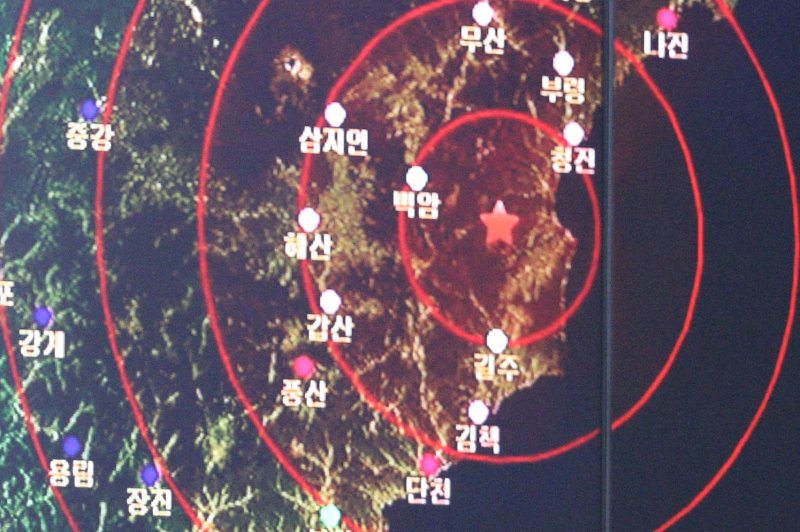
The Japan-Korea GSOMIA was canceled in 2012 due to South Korean domestic opposition, but more South Korean experts are supporting the agreement in the wake of North Korea's multiple provocations. South Korean President Park Geun-hye and Japanese Prime Minister Shinzo Abe had exchanged views in Vientiane, Laos, on bilateral protection of shared intelligence – a meeting that took place as relations between Seoul and Tokyo have improved in the wake of an agreement on the issue of comfort women.
Japanese Defense Minister Tomomi Inada had also requested an agreement on the bilateral protection of shared intelligence during a phone call to South Korea's Han Min-koo, according to the South Korean press report. But Han had said any agreement with Japan is to be made according to domestic consensus. In early September, a Japanese command to "destroy" incoming North Korea missiles repeatedly failed when North Korea launched three ballistic missiles that landed west of Hokkaido, prompting concerns in the country.
Japan, South Korea to discuss coordinated response on North Korea

At the Chinese foreign affairs ministry's regular press conference on Monday, spokesperson Hua Chunying said U.S. Defense Secretary Ash Carter was being "unnecessarily modest" for thrusting the responsibility of handling Pyongyang solely on China. "The cause and crux of the Korean nuclear issue rest with the U.S. rather than China," added Hua in an official transcript from the foreign affairs ministry. "The core of the issue is the conflict between (North Korea) and the U.S. It is the U.S. who should reflect upon how the situation has become what it is today, and search for an effective solution. It is better for the doer to undo what he has done. The U.S. should shoulder its due responsibilities," she said.
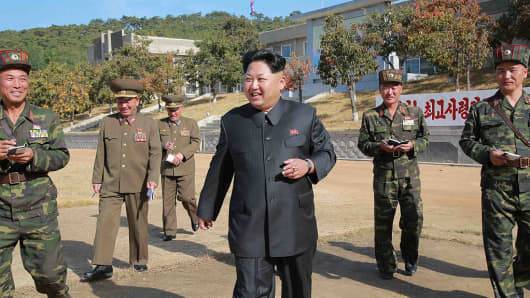
North Korean leader Kim Jong-un inspects a unit of the Korean People's Army
Hua was responding to Carter who singled out the East Asian giant at a news conference in Norway as bearing the responsibility for North Korea's recalcitrant nuclear testing. "It's China's responsibility," he said, according to Reuters. "China has and shares an important responsibility for this development and has an important responsibility to reverse it." "And so it's important that it (China) uses its location, its history and its influence to further the denuclearization of the Korean peninsula," he added. Meanwhile, North Korea through its state-run news agency KCNA also said U.S. was the "very one" compelling the isolated country to develop nuclear warheads. The U.S.' constant "nuclear threat and blackmail" in the past decades was "an engine which pushed the (North Korea) to reach this point," it said.
On Tuesday, two U.S. B-1 bombers flew over South Korea in a show of solidarity with South Korea while Sung Kim, the U.S. envoy on North Korea, said the world's largest economy remained open to a meaningful dialogue with Pyongyang, Reuters reported. Meanwhile, North Korea through its state-run news agency KCNA also said U.S. was the "very one" compelling the isolated country to develop nuclear warheads. The U.S.' constant "nuclear threat and blackmail" in the past decades was "an engine which pushed the (North Korea) to reach this point," it said. On Tuesday, two U.S. B-1 bombers flew over South Korea in a show of solidarity with South Korea while Sung Kim, the U.S. envoy on North Korea, said the world's largest economy remained open to a meaningful dialogue with Pyongyang, Reuters reported.
MORE
Could North Korea actually put a nuclear warhead atop a rocket and fire it at a potential adversary? Some still doubt North Korea can make a warhead small enough, or miniaturize it enough, to mount atop a missile. But that's what North Korea said it proved Friday. South Korean monitors said Friday's nuclear test had a yield equivalent to 10 kilotons of TNT, which would make it North Korea's most powerful of five tests to date. That blast came just days after North Korea test-fired three ballistic missiles, which landed in Japan's Air Defense Identification Zone, about 155 miles (250 kilometers) from a Japanese island. Last month, a missile fired from a submarine also landed in the same zone.
'A major concern for the region'
"They've been demonstrating not just the ability to cause a nuclear detonation, but to mount it and turn it into a weapon," said John Delury, an assistant professor of East Asian studies at Yonsei University in South Korea. "If there's evidence that they can do that -- or they have done that -- then this is a major concern for the region," Alexander Neill, a North Korea expert at the International Institute for Strategic Studies Asia, said. Friday's nuclear test was North Korea's second this year, something that shows North Korea is "mastering the technology," said Lassina Zerbo, executive secretary of the Comprehensive Nuclear-Test-Ban Treaty Organization. But analysts say there's no way to determine the extent of North Korea's missile technology until they actually use it.
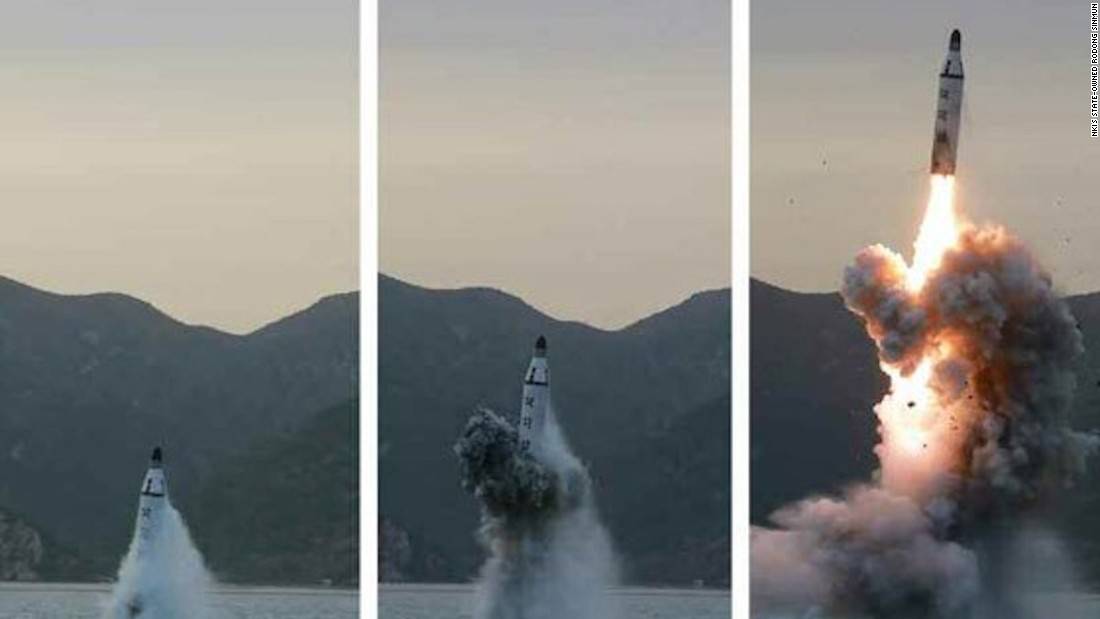
Images published by North Korean state media purport to show a submarine-launched ballistic missile (SLBM) off the eastern coast of the Korean peninsula on Saturday, April 23, 2016. Five days later, South Korea claims the North launched two more missiles on April 28 that failed. On February 9, 2016 South Korea's Defense Ministry releases images of debris believed to be a part of North Korean rocket, which was launched on February 7. Pyongyang said it had successfully launched Earth observation satellite Kwangmyongsong-4 into orbit.
MORE
To be sure, some added sanctions--and better sanctions enforcement--should, as always, be the first step here. That said, we can already predict what Beijing is most likely to do, based on history. Some moderate toughening of formal sanctions will happen, but many Chinese firms will avoid tough enforcement and the net effect will be very modest. As recent research by John Park and others at Harvard has shown, this has been the norm for years. But we also need to recognize reality: North Korea continues to test nuclear weapons — no other country has done so this century — and it may well keep it up. Even worse, as best we can tell, it continues to produce more fissile materials and thus quite likely more bombs. It remains demonstrably unfazed by Western sanctions and unafraid of Chinese retaliation. Perhaps North Korea will decide this latest test was successful enough that it should stop. But that may be wishful thinking, too.
We need a policy that is both more pragmatic, in terms of its immediate goals for changing North Korea’s behavior, and more promising in its ability to gain greater Chinese cooperation for squeezing North Korea if there are further unacceptable actions taken in the future. How to do this? The United States and other countries should keep its same goal of North Korean denuclearization, the complete and verifiable elimination of its existing arsenal of perhaps 10 to 12 bombs (maybe more), as the only way for Pyongyang to gain a lifting of sanctions and greater economic aid in the future. But we also need a shorter-term and more pragmatic approach that would seek to freeze North Korea's progress. A new president could pursue this come January, after President Obama presumably first makes the effort to tighten sanctions as a necessary if unpromising first American and international response.
We cannot reward North Korea for its outlandish actions, or “buy the same horse twice” to quote those U.S. officials who argued in the past that North Korea violated previous denuclearization deals and then returned to the negotiating table, only to demand additional compensation. But we can offer incentives for North Korea to take certain actions that it has not yet been asked to undertake, along with restraint on the nuclear front, as part of a package deal. The interim goal of this policy to dissuade Pyongyang from any more nuclear testing and to persuade it to dismantle, verifiably, its nuclear infrastructure — the reactor that produces plutonium and the centrifuges that produce enriched uranium. We know where the former is. We do not know where the latter is located, so some form of managed access would be needed to identify and visit these sites (perhaps involving Chinese, Russian or UN monitors, if American eyes are unwelcome).
MORE
The United States Strategic Command detected the failed North Korean missile launch at 6:30 a.m. on Thursday, Pyongyang time, the command said in a news release. The test, which took place near the northwestern city of Kusong, involved the North’s Hwasong-10 missile, known to the outside world as the Musudan. The launch did not pose a threat to North America, the news release said. It gave no further details about the failed attempt.
North Korea has had a spotty record in test-launching the Musudan, the longest-range ballistic missile it has deployed. In seven previous tests, the projectiles often exploded or crashed into the sea shortly after launch, South Korean and United States officials have said. In the last test of the Musudan, which took place near Kusong on Saturday, the missile also exploded shortly after takeoff, according to the South Korean military.
North Korea successfully launched the Musudan in June after five consecutive failures. But the recent failures indicated that the North has yet to perfect the missile. With a range of more than 2,000 miles, it is the North’s only deployed missile with a range sufficient to reach American military bases in Guam in the Pacific, and in South Korea and Japan.
5 Days After Failed Missile Test by North Korea, Another Failure
He was speaking at start of talks between the top U.S. and South Korea diplomats and defense officials on their response to the growing threat from North Korea's nuclear and missile programs. The meeting comes weeks after the North's most powerful nuclear test explosion to date, and days after its failed test launch of a ballistic missile. On the agenda is how to strengthen the so-called "extended deterrence" provided by U.S. nuclear forces in defending South Korea. Seoul is looking to allay calls from conservatives at home who want South Korea to develop its own nuclear arsenal. "The U.S. commitment to the defense of South Korea is unwavering. This includes our commitment to provide extended deterrence, guaranteed by the full spectrum of U.S. defense capabilities," Carter said in opening remarks. "Make no mistake, any attack on America or our allies will not only be defeated, but any use of nuclear weapons will met with an overwhelming and effective response," he said.
The talks are between Secretary of State John Kerry and Carter, and their South Korean counterparts Foreign Minister Yun Byung-se and Defense Minister Han Min-koo. Yun said that the threat posed by North Korea is "more grave than ever" and that the North is "nearing the final stage of nuclear weaponization." The North has conducted two nuclear tests this year and 23 missile tests, deepening concern that is moving closer to having a nuclear-tipped missile that could reach the American mainland. Kerry reiterated the U.S. will deploy "as soon as possible" a Terminal High Altitude Area Defense, or THAAD, a missile defense system intended to protect South Korea and the nearly 30,000 U.S. forces based there.
The plans for THAAD have angered China and Russia, which see it as a threat to their own defense. Kerry called for every country to rigorously enforce U.N. sanctions on North Korea, which are intended ¬タヤ but have failed ¬タヤ to prevent its development of weapons of mass destruction. The U.S. and China, which is the North's traditional ally and main trading partner, are currently negotiating at the U.N. Security Council on tightening sanctions in response to the Sept. 9 nuclear test. The U.S., South Korea and Japan are considering additional sanctions of their own. "We need to ensure, working together, that the DPRK pays a price for its dangerous actions, even ¬タヤ and I want to emphasize this ¬タヤ (as) we work for the peaceful denuclearization of the Korean Peninsula," Kerry said, using the abbreviation for the North's official name, Democratic People's Republic of Korea.
The U.S. hopes that tighter sanctions can force impoverished North Korea to return to long-stalled aid-for-disarmament negotiations, but there appears to be little prospect of their resumption because of Pyongyang's determination to have nuclear weapons. North Korea's state-run Rodong Sinmun newspaper on Wednesday said the North would strengthen its nuclear capabilities in quantity and quality in response to the threat from its enemies. "We have warned that South Korea will be engulfed in a sea of fire and the U.S. military units in the Pacific region and the mainland will be in chaos if the U.S. wages nuclear strikes against us," the newspaper said. "Our warning is not an empty word."
US Warns 'Overwhelming' Response to Any North Korea Use of Nukes | Military.com
Fatboy Kim can't get his missile up...

5 Days After Failed Missile Test by North Korea, Another Failure
OCT. 19, 2016 — North Korea launched an intermediate-range ballistic missile on Thursday, but the test ended in failure, the United States military said. It was the North’s second failed attempt to flight-test that type of missile in five days.
The United States Strategic Command detected the failed North Korean missile launch at 6:30 a.m. on Thursday, Pyongyang time, the command said in a news release. The test, which took place near the northwestern city of Kusong, involved the North’s Hwasong-10 missile, known to the outside world as the Musudan. The launch did not pose a threat to North America, the news release said. It gave no further details about the failed attempt.
North Korea has had a spotty record in test-launching the Musudan, the longest-range ballistic missile it has deployed. In seven previous tests, the projectiles often exploded or crashed into the sea shortly after launch, South Korean and United States officials have said. In the last test of the Musudan, which took place near Kusong on Saturday, the missile also exploded shortly after takeoff, according to the South Korean military.
North Korea successfully launched the Musudan in June after five consecutive failures. But the recent failures indicated that the North has yet to perfect the missile. With a range of more than 2,000 miles, it is the North’s only deployed missile with a range sufficient to reach American military bases in Guam in the Pacific, and in South Korea and Japan.
5 Days After Failed Missile Test by North Korea, Another Failure
See also:
US Warns 'Overwhelming' Response to Any North Korea Use of Nukes
Oct 19, 2016 | WASHINGTON -- Defense Secretary Ash Carter warned Wednesday that any attack on American allies or use of nuclear weapons by North Korea would be met with an "overwhelming" U.S. response.
He was speaking at start of talks between the top U.S. and South Korea diplomats and defense officials on their response to the growing threat from North Korea's nuclear and missile programs. The meeting comes weeks after the North's most powerful nuclear test explosion to date, and days after its failed test launch of a ballistic missile. On the agenda is how to strengthen the so-called "extended deterrence" provided by U.S. nuclear forces in defending South Korea. Seoul is looking to allay calls from conservatives at home who want South Korea to develop its own nuclear arsenal. "The U.S. commitment to the defense of South Korea is unwavering. This includes our commitment to provide extended deterrence, guaranteed by the full spectrum of U.S. defense capabilities," Carter said in opening remarks. "Make no mistake, any attack on America or our allies will not only be defeated, but any use of nuclear weapons will met with an overwhelming and effective response," he said.
The talks are between Secretary of State John Kerry and Carter, and their South Korean counterparts Foreign Minister Yun Byung-se and Defense Minister Han Min-koo. Yun said that the threat posed by North Korea is "more grave than ever" and that the North is "nearing the final stage of nuclear weaponization." The North has conducted two nuclear tests this year and 23 missile tests, deepening concern that is moving closer to having a nuclear-tipped missile that could reach the American mainland. Kerry reiterated the U.S. will deploy "as soon as possible" a Terminal High Altitude Area Defense, or THAAD, a missile defense system intended to protect South Korea and the nearly 30,000 U.S. forces based there.
The plans for THAAD have angered China and Russia, which see it as a threat to their own defense. Kerry called for every country to rigorously enforce U.N. sanctions on North Korea, which are intended ¬タヤ but have failed ¬タヤ to prevent its development of weapons of mass destruction. The U.S. and China, which is the North's traditional ally and main trading partner, are currently negotiating at the U.N. Security Council on tightening sanctions in response to the Sept. 9 nuclear test. The U.S., South Korea and Japan are considering additional sanctions of their own. "We need to ensure, working together, that the DPRK pays a price for its dangerous actions, even ¬タヤ and I want to emphasize this ¬タヤ (as) we work for the peaceful denuclearization of the Korean Peninsula," Kerry said, using the abbreviation for the North's official name, Democratic People's Republic of Korea.
The U.S. hopes that tighter sanctions can force impoverished North Korea to return to long-stalled aid-for-disarmament negotiations, but there appears to be little prospect of their resumption because of Pyongyang's determination to have nuclear weapons. North Korea's state-run Rodong Sinmun newspaper on Wednesday said the North would strengthen its nuclear capabilities in quantity and quality in response to the threat from its enemies. "We have warned that South Korea will be engulfed in a sea of fire and the U.S. military units in the Pacific region and the mainland will be in chaos if the U.S. wages nuclear strikes against us," the newspaper said. "Our warning is not an empty word."
US Warns 'Overwhelming' Response to Any North Korea Use of Nukes | Military.com
For North Korea, that is ruled by its supreme leader Kim Jong Un, doubts of suspicion are even higher after it issued an open warning to its neighbour and long-time rival South Korea and also its ally the United States. North Korea has managed to stun the world with his nuclear ambition and its recent progress has caused fears to grow across many Asian nations. With two nuclear tests conducted this year, it has managed to draw international ire from several nations - however, with seven out of its eight missile tests failing - the North has grown very suspicious and now, Kim Jong Un wants to uncover the reason behind the failure.
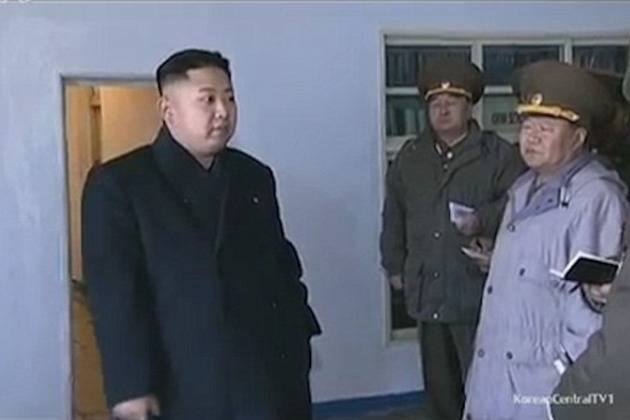
Between April 15 and October 20, North Korea has test fired the Musudan missiles eight times, but only the launch on June 22 recorded success. The Musudan missile, with a design range of 1,500 to 2,500 miles, is believed to be capable of reaching South Krea, Japan and even the U.S. territory of Guam. However, Kim Jong Un hailed the success of the single Musudan success in June after it flew 250 miles into the Sea of Japan, claiming that it was proof of North’s ability to strike U.S. bases across ‘the Pacific operation theatre.’ Fearing sabotage and to understand the problem that might be affecting Jong Un’s plans from inside the country - the leader is said to have launched a nation-wide spy-hunting operation.
He also wants to find a link between espionage and the missile failures, the North Korea Intellectuals Solidarity (NKIS) said. The leader reportedly suspects that some failed launches may stem from covert actions by the United States Central Intelligence Agency (CIA) and South Korea’s National Intelligence Service (NIS). The investigation currently is said to be focussing on the imported missile components, including the integrated circuit chips that are part of the flight control system. North Korean defector and the head of NKIS, Kim Heung-kwang said at a press conference, “Kim has instructed the special investigation team to implement a probe into the national defense sector starting on November 1 to make the causes for the launch failures clear. Officials and workers who engaged in the launches of the missiles are now banned from travelling and their mobiles phones are confiscated to check their conversation records.”
MORE

